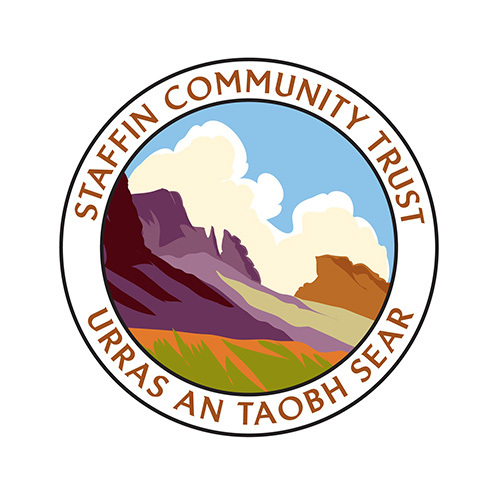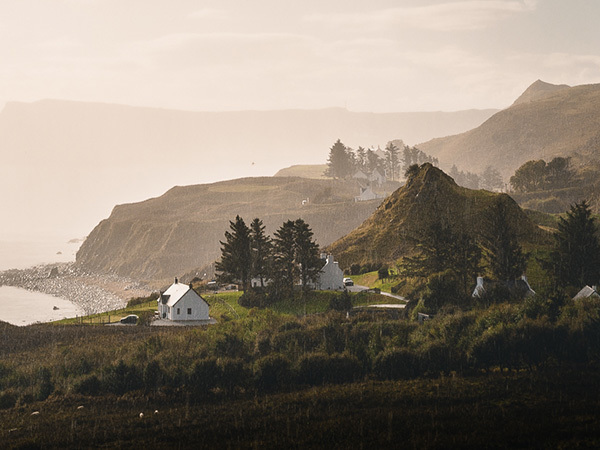Quiraing


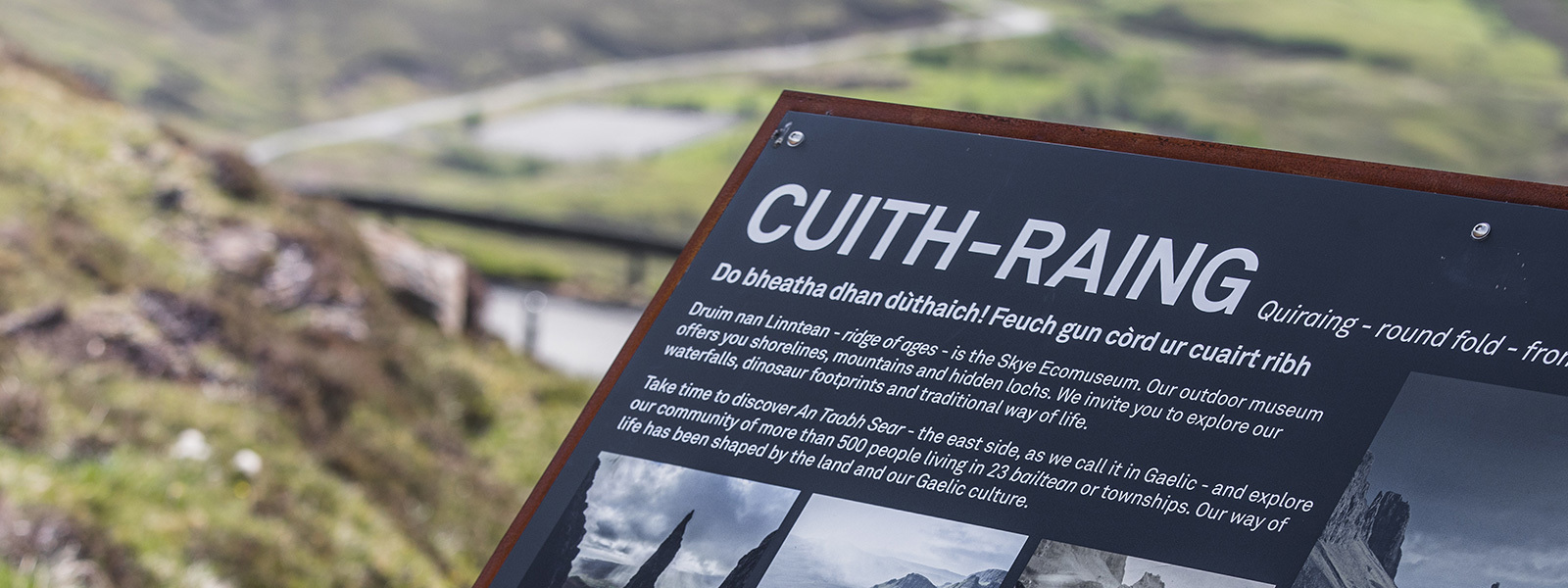
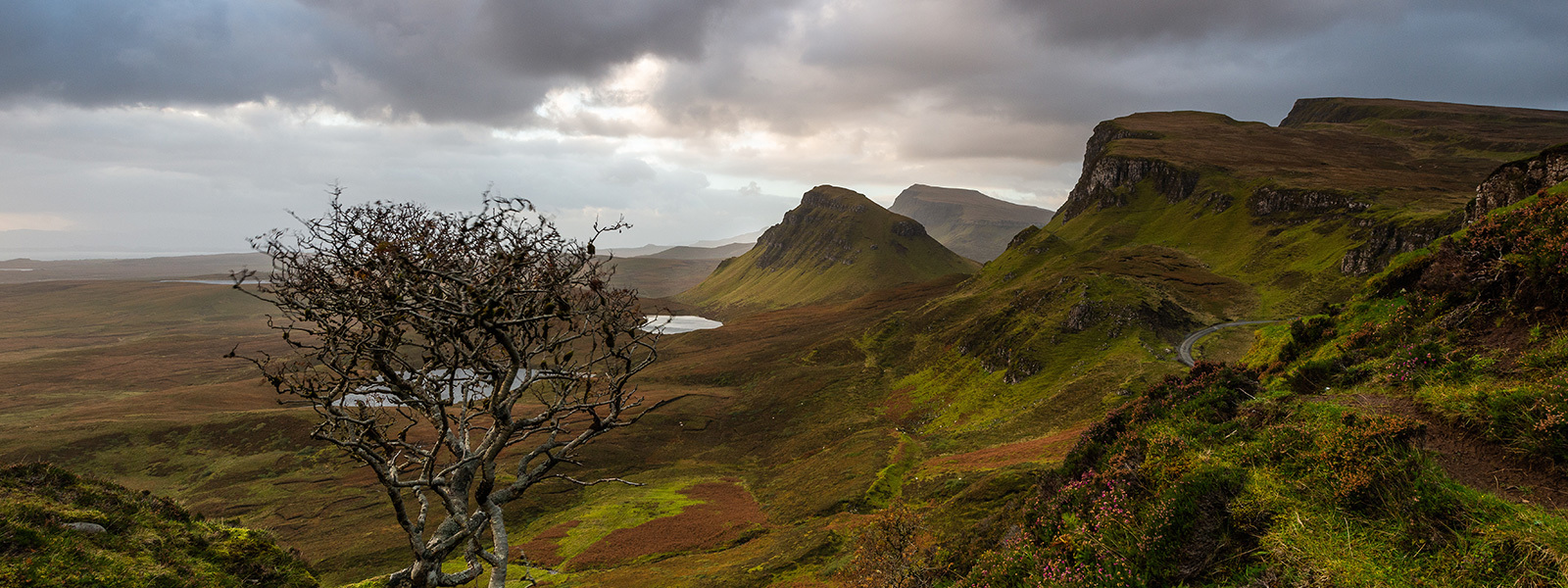
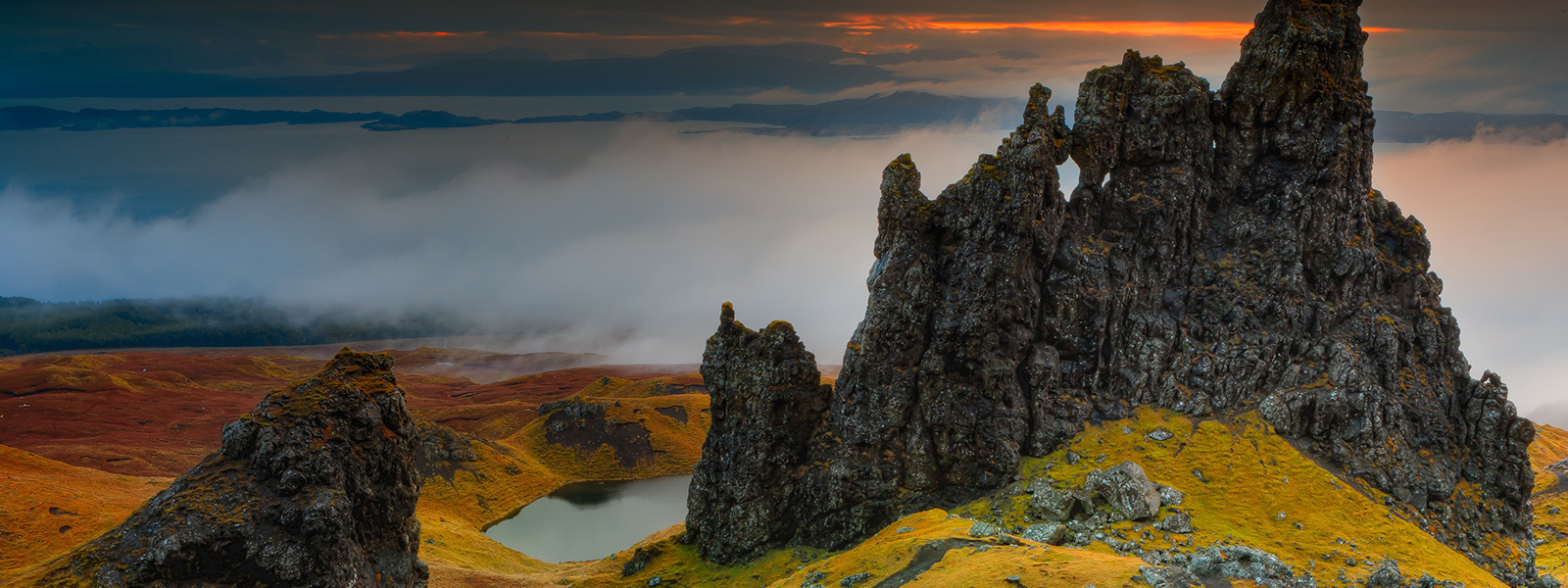
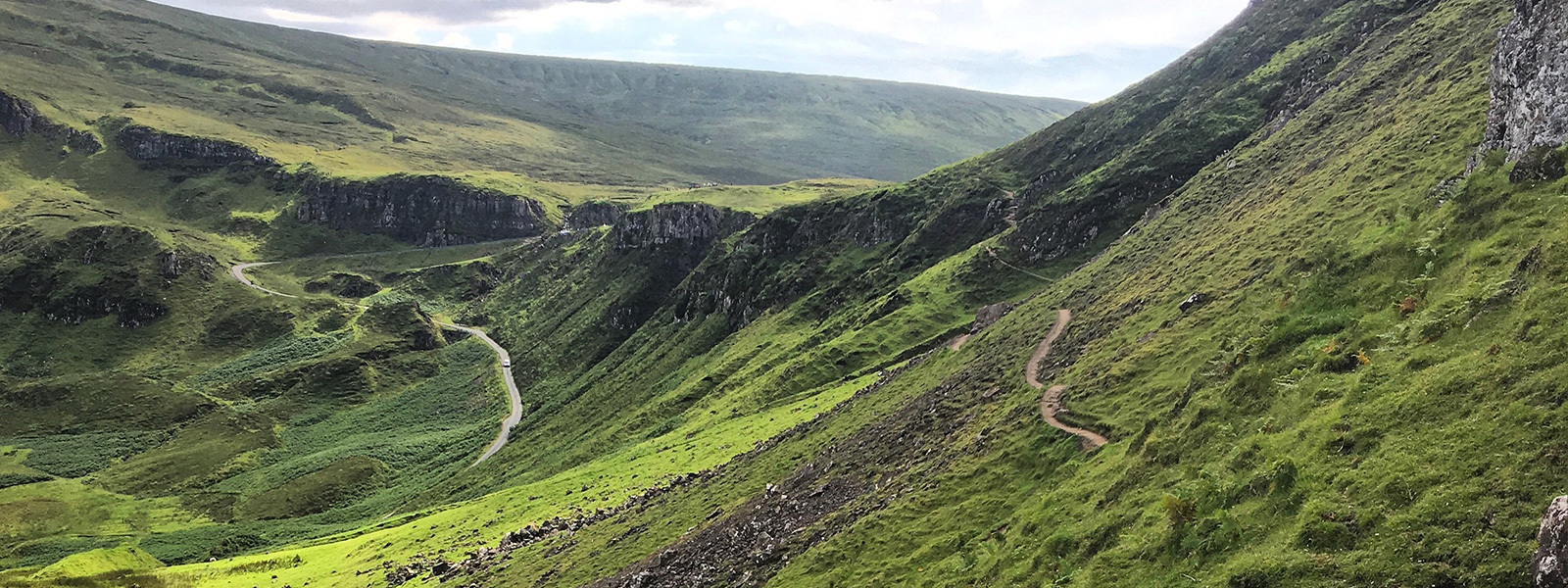
Cuith-raing
Cuith-raing, generally spelt as Quiraing, is a spectacular landscape that is best visited by taking the time to explore on foot over a few hours.
It is made up of towers, needles and plateaus and is a truly memorable place to explore.
Its best-known features are Am Prìosan, the prison, a hollow beneath a rocky pyramid which looks like a medieval castle, An t-Snàthad, a 37-metre pinnacle, and Am Bòird, or the table, a hidden flat grassy area. Cuith-raing is not the summit of any specific part but describes this collection of features in the northern part of the landslip along the Trotternish ridge.
Cuith-raing is often described as the most active part of the landslide that continues south to the equally famous landmark of the Old Man of Storr.
Distance: 6.5 km / 4 miles 3-4 hours return
Difficulty: Moderate walk. Bring map and compass, warm, wind and waterproof clothing. hillwalking boots. Remember the weather can change quickly here.
The Trotternish ridge is a 19-mile inland cliff created about 11,500 years ago during the last Ice Age. It is made of layers of rock – hard rock on top of much softer rock below.
Locals have been known to play shinty on the Table, grassy plateau of the Quiraing.
The Table itself considered large enough to hold 4000 head of cattle.
Useful Information
Walking Routes
There are two routes that we advise visitors to walk when visiting the Quiraing.
The walk from our other location of Loch Langaig in the township of Flodigarry. This route is generally a bit quieter and is recommended if you have more time. If you have a member of your party who is not looking to walk the route you may also consider a pick-up and drop-off option. This would be from the Quiraing car park to Loch Langaig. Only do this if you feel confident in your timings, equipment and route finding.
The more traditional route is to follow the well trodden path beneath the cliff face past the Needle and Prison, and beyond. Return the way you came or continue eventually returning via the summit of Meall na Suiramach. Other features along this route include the distinctive Fir Bhreugach, or false men, that from certain angles live have a very appropriate name. We think that the route described on the Walk Highlands link below.
Soraidh le Eilean a’ Cheò Màiri Mhòr nan Òran (1821 – 1898)
Cò aig a bheil gràdh
No tàlantan na cheann,
Is dèidh air obair nàdair,
Nach toir sràchdan ann;
Sasannaich is Stàdaich,
Agus àireamh Ghall,
A chosdas cuid dem maoin
A dh’fhaicinn taobh Chuith-raing?

